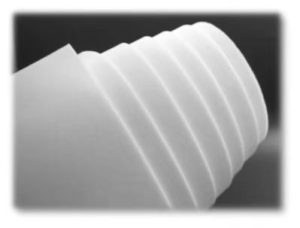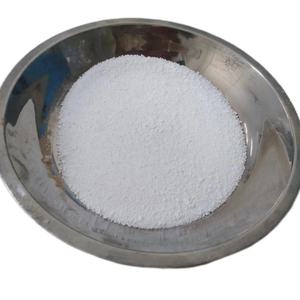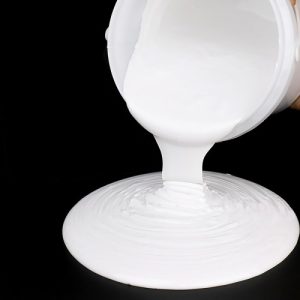Professional industry ceramic supplier, silicon nitride, silicon carbide, aluminum nitride and any other kinds of ceramics.
1. Introduction
Just 24 hours ago, a major materials science conference in Germany highlighted breakthroughs in reusable silicon carbide crucibles that withstand over 1,600°C without degradation—sparking renewed interest in advanced ceramics for metal casting and semiconductor production. As global demand for high-performance refractories grows, understanding the nuances of silicon carbide crucibles has never been more critical.

Silicon carbide crucibles are prized for their exceptional thermal conductivity, chemical inertness, and resistance to thermal shock. But not all SiC crucibles are created equal. This article breaks down five essential comparisons that define their real-world performance and applications.
2. Silicon Carbide vs. Other Crucible Materials
When choosing a crucible for high-temperature processes, engineers often weigh silicon carbide against alumina (Al2O3), zirconia (ZrO2), and even boron nitride. Each material offers distinct trade-offs.
- Alumina crucibles (al2o3 crucible) are cost-effective and widely used but crack under rapid temperature changes.
- Zirconia crucibles offer superb chemical resistance but suffer from lower thermal conductivity and higher cost.
- Boron nitride is non-wetting and ideal for reactive melts but lacks mechanical strength at very high temperatures.
In contrast, silicon carbide crucibles deliver unmatched thermal shock resistance and structural integrity, making them ideal for melting aluminum, copper, and even precious metals.
3. Manufacturing Methods: Reaction-Bonded vs. Sintered SiC
Not all silicon carbide crucibles perform the same—even within the SiC family. The two dominant manufacturing techniques are reaction-bonded silicon carbide (RBSiC) and sintered silicon carbide.
RBSiC crucibles are made by infiltrating porous carbon preforms with molten silicon. This yields near-net-shape components with excellent dimensional stability and is commonly used in rbsic silicon carbide tile blocks and furnace linings.
Sintered SiC, on the other hand, uses fine SiC powder pressed and fired at high temperatures without binders. The result is a denser, purer product with superior corrosion resistance—ideal for lab-grade crucibles or semiconductor applications.

For industrial users, RBSiC offers better cost efficiency and machinability, while sintered SiC excels in purity-critical environments.
4. Beyond Crucibles: The Expanding Universe of Silicon Carbide Ceramics
The versatility of silicon carbide extends far beyond crucibles. Its robust properties make it suitable for a surprising range of consumer and industrial items.
In kitchens, you’ll find silicon carbide ceramic baking dishes, casserole dishes with lids, and even black ceramic dinner plates—all leveraging SiC’s even heat distribution and durability. Brands like Staub have explored silicon carbide baking dish staub variants for gourmet cooking.
Industrially, silicon carbide appears in burner nozzles, thermocouple protection tubes, ceramic pipes, and silicon carbide ceramic columns for filtration systems. Even plumbing components like silicon carbide ceramic disc taps benefit from its wear resistance.
Meanwhile, silicon carbide discs—used as grinding or sanding media—highlight its hardness, second only to diamond among common industrial abrasives.
5. Silicon Carbide vs. Silicon Nitride: A High-Temperature Showdown
Another key comparison lies between silicon carbide and silicon nitride (Si3N4)—two advanced ceramics often pitted against each other in extreme environments.

Silicon nitride offers higher fracture toughness and better performance under tensile stress, making it ideal for rotating parts like bearings or custom silicon nitride heat shields. Factories producing silicon nitride crucibles target niche aerospace and electronics markets.
However, silicon carbide outperforms in thermal conductivity and oxidation resistance above 1,400°C. For static, high-heat applications like crucibles or furnace tubes, SiC remains dominant.
Interestingly, some hybrid designs now combine both: silicon carbide mullite tubes or silicon carbide zirconia tubes blend complementary properties for specialized use cases.
6. Boron Carbide vs. Silicon Carbide: Armor and Abrasion
While not typically used for crucibles, boron carbide (B4C) often enters the conversation due to its extreme hardness. Boron carbide vs silicon carbide debates usually center on ballistic armor or abrasive blasting.
Boron carbide is harder (30 GPa vs. SiC’s 25 GPa) but more brittle and significantly more expensive. It’s rarely used in thermal applications because it oxidizes rapidly above 500°C.
Silicon carbide, by contrast, maintains stability up to 1,600°C in air, making it far more practical for crucibles, kiln furniture, and high-temp industrial components.
7. Conclusion
Silicon carbide crucibles stand out not just for their raw performance but for their adaptability across industries—from foundries to fine dining. Whether you’re comparing manufacturing methods, alternative ceramics like alumina or silicon nitride, or even unrelated ultra-hard materials like boron carbide, SiC consistently proves its worth in high-stress, high-temperature scenarios. As advanced ceramics manufacturing evolves, expect silicon carbide to remain at the forefront of innovation.
Our Website founded on October 17, 2012, is a high-tech enterprise committed to the research and development, production, processing, sales and technical services of ceramic relative materials such as 5. Our products includes but not limited to Boron Carbide Ceramic Products, Boron Nitride Ceramic Products, Silicon Carbide Ceramic Products, Silicon Nitride Ceramic Products, Zirconium Dioxide Ceramic Products, etc. If you are interested, please feel free to contact us.





